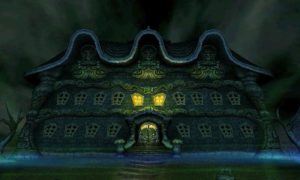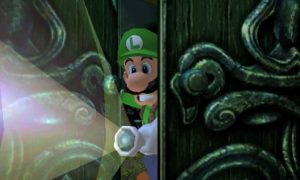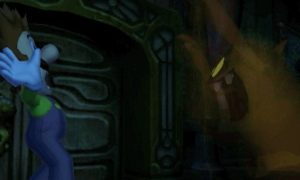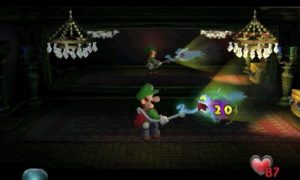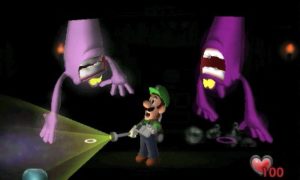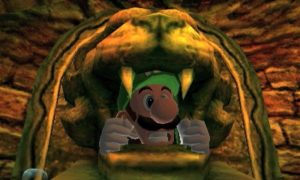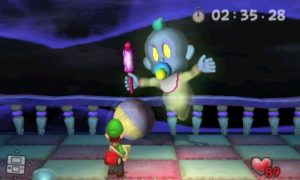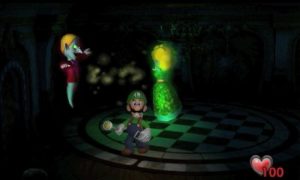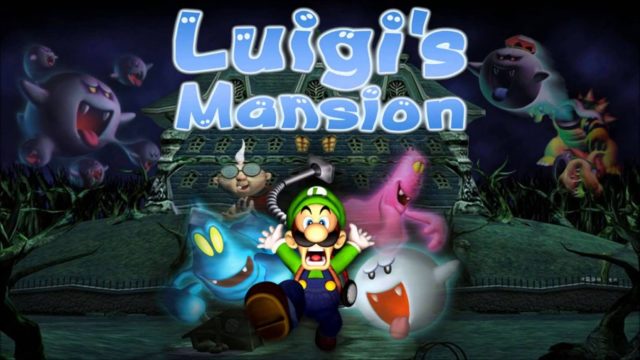
Digging around through my video game and console collection the other day, I decided to put my Xbox One into the closet and drag out my GameCube. The system was something I’d really been wanting to fiddle with, as it had been awhile since I’d sat and played anything on it. Flipping through my games, I settled upon Luigi’s Mansion— it’s always been a favorite and I couldn’t remember the last time I’d finished it.
Popping the disc into the system, I sat back and listened to the comforting sound of the ghostly narrator announcing “Nintendo!” in its undead, eerie tone. Quickly, the mansion appeared on-screen and I found myself making a new save file, ready to get ghost-busting. Luigi, shaking with fear, flashlight in-hand, made his way into the doors in search of his brother. I was pumped. Certainly more than Mario’s timid brother!
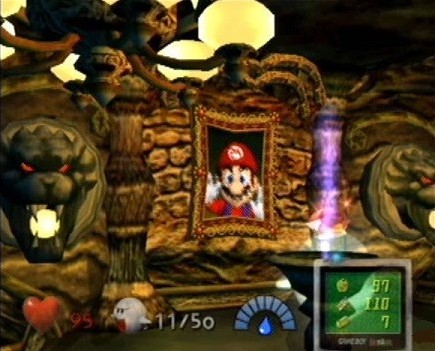
One thing that’s tragic about playing GameCube-era software is how grainy everything can sometimes look. Some games have it worse than others, of course, but the difference between today’s HD spectacles and the more humble resolution of a Luigi’s Mansion is pretty stark. Some people grouse that it hurts their eyes, but I call total hyperbole on that. It’s more a matter of adjusting, of getting back into the groove of the era. After all, our eyes might grow accustomed to things like HD, but it sure didn’t prevent anyone from playing these games back when they were new! I definitely appreciate the clarity in today’s titles, but it doesn’t stop me from going back to older software.
Luigi’s Mansion remains impressive in its attention to details both big and small. Trails of dust swirl behind Luigi’s feet, plumes of grit that can then be vacuumed into the plumber’s trusty ghost-sucking Poltergust 3000. The rooms are shrouded in darkness prior to removing the offending spirits that stalk them, but they’re not so dim that all of the gorgeous intricacies of the rooms and halls are lost. Watching Luigi’s flashlight as it glows on walls and furniture, it still felt like I was shining an actual light into real rooms.
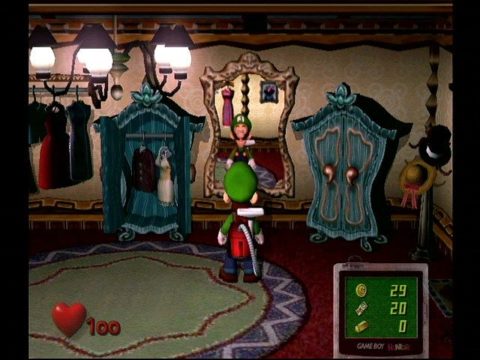
The mansion itself is a delightful pastiche of Victorian architecture from the mid to late 19th century mixed with Japanese flourishes. It’s an interpretation of the west that is so common in Japanese titles that it lends itself perfectly to Luigi’s Mansion, as it makes the game feel both familiar and foreign simultaneously. It’s this clear juxtaposition of the two cultures’ design sensibilities that makes exploring the mansion feel so rewarding and entertaining. If it was nothing but a precise replica of a house of that era, I doubt the game would be anywhere near as fun. Discovering what’s inside of each room in Luigi’s Mansion remains one of the biggest draws in gaming.
The dual-control stick setup of Luigi’s Mansion was fairly revolutionary for its time. Similar to Crash Bandicoot on PlayStation, Luigi is the focal point of the in-game camera at all times. It never strays from him and keeps the action centered in the middle of the player’s field of vision. There’s no control afforded to the player over the camera’s positioning, as the second analogue stick, the C-Stick, is delegated to manipulating both the aim of the Poltergust 3000 as well as the flashlight. That could have been disastrous, but as Crash Bandicoot so elegantly demonstrates along with Luigi’s Mansion, affixing the camera to a position where all of the action on-screen is clearly visible eliminates any need to manually manipulate it.
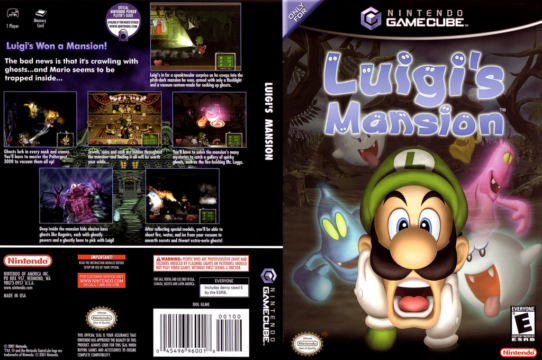
I mentioned the small touches in Luigi’s Mansion being an equal part of its appeal because they do so much to sell a sense of place and connect the player even further to the game. Luigi’s reactions throughout the adventure are a delight to watch. He shakes, he shivers… he even whistles his own game’s theme music to distract himself from the fear coursing through his body. Breath escapes his mouth in great wafts when it’s cold and his hand tremors as it reaches towards the door handle of a new room to explore. It makes Luigi feel like a real person and really gets the player rooting for him. Indeed, the modern characterization of Luigi has firm roots here; outside of Paper Mario and a handful of other titles, Luigi’s Mansion offered the first truly comprehensive insight into the character and his personality.
There’s also a subtlety in Luigi’s Mansion’s design that is so integral to its success. Professor E. Gadd, who is ostensibly Luigi’s navigator throughout the game, is never leaned on any more than necessary in order to move along the plot (of which there’s just the right amount). He also delivers some great comic relief in contrast to Luigi’s perpetual state of panic. Like a Seinfeld side character, however, the design team at Nintendo knew that E. Gadd was best used in small doses. He never overstays his welcome.
The pacing of Luigi’s Mansion is another immensely important aspect of the game. The adventure is divided into four “chapters.” Within these chapters, Luigi is free to explore every bit of the mansion that’s open to him at the time. There’s a multitude of secrets to uncover, hidden away in all of the furniture and plants and nooks and holes that the mansion is filled with. While E. Gadd will interject occasionally, it’s always with pertinent information. The game encourages the player to explore by virtue of its enticing environment and placid gait. Everything in every room practically begs the player to vacuum, shake, or open it without the need of big glowing arrows or the prompting of a narrator.
Of course, Luigi’s Mansion isn’t perfect. The C-Stick can be unwieldy at times. Whipping around to aim the Poltergust 3000 at Boos, for instance, can become a real chore, particularly the later interactions with them when the bashful spirits become faster and have higher hit points. It also feels like there could have been more done to break up the gameplay. Little challenges like finding the reflection of the switch in the Storage Room and navigating the rooms with Gravity Arrows are too few and far between. Yet, the core mechanic of vacuuming ghosts is so well done that these are small gripes. Overall, the controls are very responsive and I personally never felt like tedium was setting in as I made my way around the mansion.
With the upcoming release of the remake of Luigi’s Mansion heading to 3DS, I’m excited to see how the game fares on new hardware and with a graphical facelift all these years later. While I’d have loved to see it arrive on Switch, it will be nice having it alongside its sequel on 3DS. What memories do you have of Luigi’s Mansion? Share them with us in the comments and on social media!




 ShareThis
ShareThis